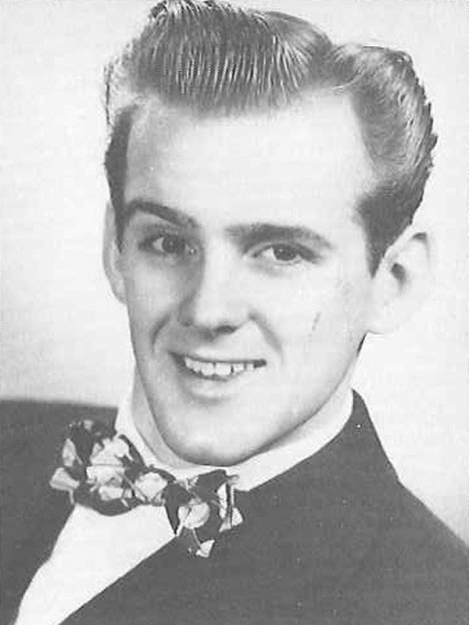
COMMERCIAL DANCE IN A NUTSHELL

Jazz Pioneers
Jack Cole (father of jazz)
“Everybody who dances today in concert dance, or on Broadway, or in music videos have been influenced by his pioneering work” That said, a lot of people who isolate their hips or swing in a jazz groove may not know where their movement ideas came from before they thought of them.” -Maura Keefe (Scholar in Residence Jacobs Pillow)
Jack Cole, who is known as the “Father of Jazz Dance” started out a modern dancer with the Denishawn Dance Company. Cole learned and mastered the oldest form of dance in India called Bharata Nstyam. Once he learned this he fused this he mixed the style with modern and jazz which he was more used to. This lead to him creating his own technique using smooth transitions of weight and isolations, his movement is often described as ‘cat-like’. His isolations where also noted as being perfect along with his placement and syncopation of movement. He even helped Marilyn Monroe. Every dancer uses Jack Cole’s style in their classes and their choreography. Even in the warm ups, simply isolating different body parts is a technique of Coles.
http://www.danceheritage.org/treasures/cole_essay_levine.pdf
Alvin Ailey
Alvin Ailey’s main influence was Lester Horton and he even trained in the Horton technique (university musical society 2000-2001 youth education). However we do not see this influence in his choreography he tends to use it while trained his dancers as it strengthens and lengthens the muscles in his dancers. He was also greatly influenced by his mother as she was a strong woman who raised him alone. This is the reason most of his worlds have a woman as the lead role.
He said he liked to use and work with balletic use of the lower body, showing complicated foot work and long extensions. He always used long limbed dancers to show the extensions and the traditional build of African people. He also used elements of jazz and social dances and often showed a narrative or theme in his work. He used blood memories to create his pieces; these memories were not necessarily his own but those of ancestors that had been through hardships such as slavery and segregation. He also had a huge influence from the Christian church and so many of his dance works are performed to gospel music.
http://ums.org/assets/Ailey_final.pdf
Katherine Dunham
Katherine Dunham merged movements from both Caribbean and African dance styles and then mixed these with ballet from European origins and she was the first to do this. She then decided to mix her further anthropological research into the dance artistry. She also used social and cultural traditions into her performances meant for the public.
Through her anthropological studies Miss Dunham searched for the roots of black dance, and she found them in many different places. She weaved those roots into a new dance form and ultimately created the first black dance company. Dunham founded more than 60 schools to teach the Dunham Technique, and she spread the roots of American dance throughout the world. One of many labels given to Katherine Dunham is the Black Matriarch of Modern Dance. Although the title is meant to honour Miss Dunham, she has expressed public discontent with limiting the significance of her work to only black dance.
http://www.danceheritage.org/treasures/dunham_essay_deedas.pdf
Bob Fosse
Fosse was never a minimalistic man. It is said that he once fired a dancer because she could not control the movements of her eyes. It is also said that he was a rarity to the dance world and that his name has become a “brand”.
His style of dance included elements of striptease, magic shows, musicals and more. Fosse’s dance is known for the way he could make a single gesture contain so much power to captivate the audience. He used female dancers a lot as he had a fascination with them as they gave him the freedom to create sensual dances. His work contained lots of contrast and opposite, for example, big and small, fast and slow, contained and explosive. We can also see a lot of use of the hips, shoulders, backwards leaps. Another thing Fosse would do is have his dancers flirt with the audience and/or with the camera.
http://www.danceheritage.org/treasures/fosse_essay_billman.pdf
Jamie King
Jamie King is the leading concert tour director in the pop world today. His work includes that of Cirque Du Soleil’s Michael Jackson ONE. In 2012 King directed Madonna’s performance at the Superbowl half time show! In fact Jamie King has been serving as Madonna’s creative producer for the past sixteen years! He has also directed Rhianna’s tour “Loud”, Britney Spears’ tour “Femme Fatal”, and many more for the likes of The Return of the Spice Girls etc.
He has also caught the eyes of Nike who, in 2005, took him on to help create the Nike Rockstar Workout and he was even their global spokesperson. The work out DVD then went on to become the bestselling fitness DVD (and book)
Jamie King is constant in the media and his choreography is always shown on TV as he has worked with so many companies, TV shows, pop starts and icons. For this reason he has become a very influential person in the dance world.
http://www.tremainedance.com/news/?news_id=442
The final pioneer I want to talk about is Jerome Robbins. However I have a WHOLE blog dedicated to this great man.





“Life is short and there will always be dirty dishes, so let's dance.”
-James Howe
"You don't enter a dance studio and say "I can't do that." If you do, then why are you in the studio in the first place?”
-Judith Jamison